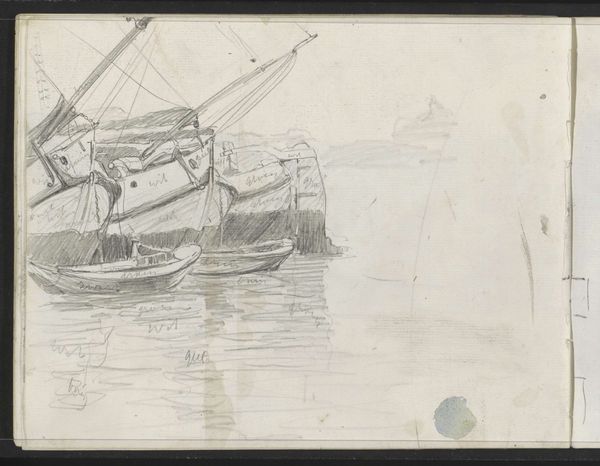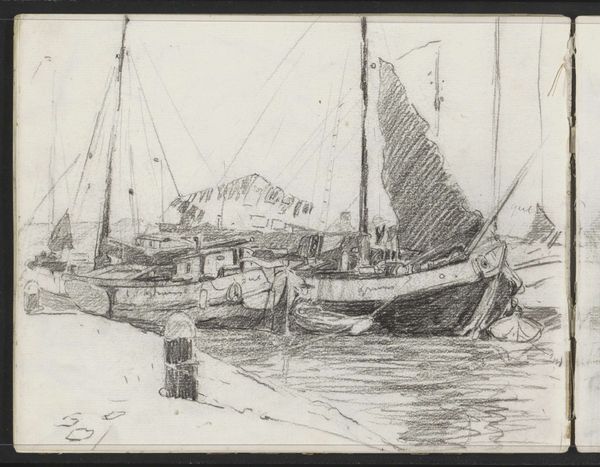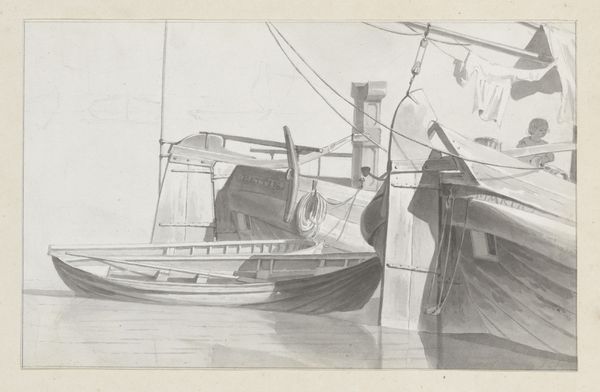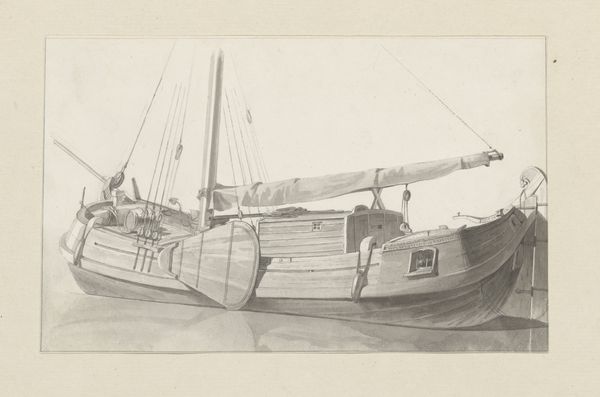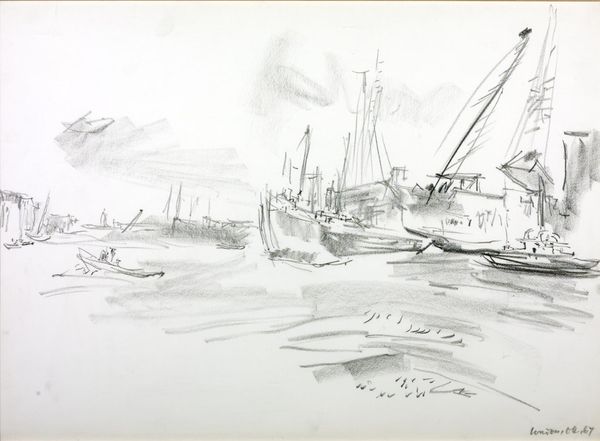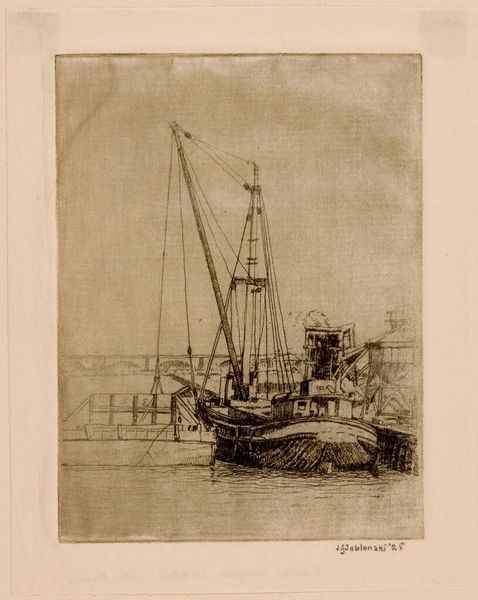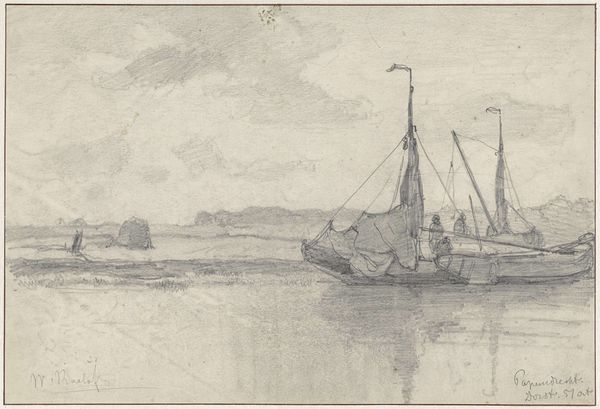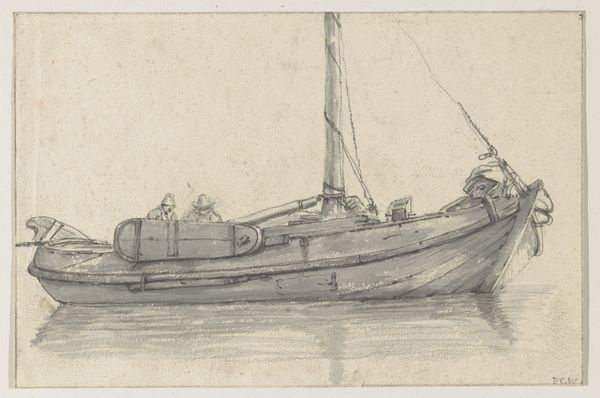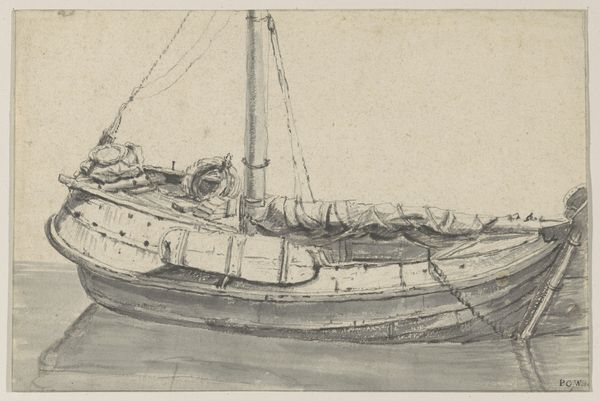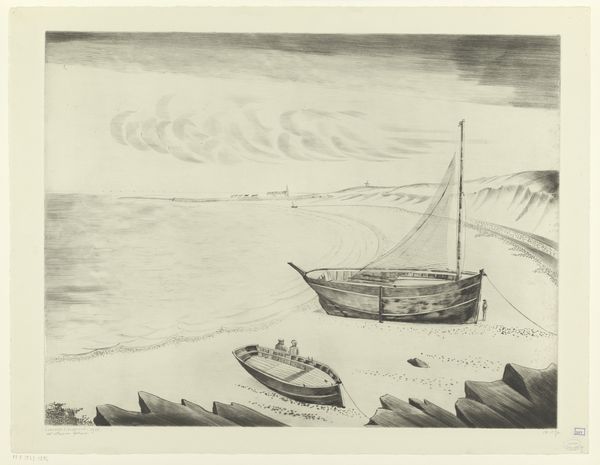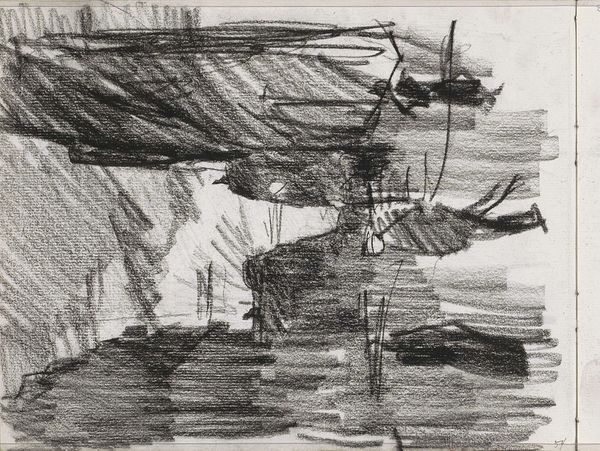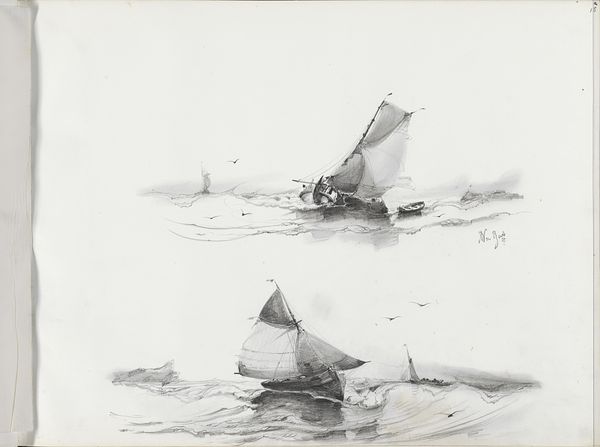
Dimensions: height 200 mm, width 260 mm
Copyright: Rijks Museum: Open Domain
Curator: This is Willem Witsen’s "Twee Schuiten", created around 1910-1911. The piece, rendered in pencil, captures two barges at rest on the water. What is your initial response to this composition? Editor: It feels melancholy and still. The grayscale rendering creates a muted atmosphere; the boats appear to be dormant, waiting for something to happen. The overall feeling suggests the quiet struggles of laborers and how maritime life, while seeming romantic, extracts a physical toll. Curator: Indeed. Witsen's deft use of line and shadow creates remarkable depth using a very limited tonal range. Note the sharp precision in delineating the boats themselves, in contrast to the looser, almost hazy depiction of the water and distant landscape. The drawing invites a detailed analysis of the distribution of light and how the materiality of the pencil contributes to its atmospheric quality. Editor: I see it as a glimpse into the working class experience of that period. What about the socio-economic contexts that would’ve been informing these scenes, the daily routines and the hard labor involved with canal work? Those ropes, those boats -- how often would working class men have been afforded peace and safety in that era? Witsen’s boats may represent that precarity. Curator: Perhaps, but I’m more interested in Witsen’s engagement with Impressionism. Look at how light shimmers off the water, and notice the artist’s use of suggestion, allowing the viewer to complete the scene. It focuses more on fleeting moments, an engagement with how atmosphere changes, and the subjective impact of perception on understanding, rather than a social commentary. Editor: But can we separate perception from socio-historical context? Who is invited to feel what and what informs the artist's very act of representing these specific boats and water textures in that moment? I agree that the artistic methods deployed reflect impressionist sentiments, but as critics we ought to look to the ways cultural backgrounds form those sentiments in the first place. Curator: Point taken, however I feel it’s a compelling display of formal precision within a seemingly informal setting that merits attention as its core success. Editor: Ultimately, Witsen's pencil drawing provides us with many entry points. By weaving together perspectives, perhaps we can truly appreciate its evocative power and complexities.
Comments
No comments
Be the first to comment and join the conversation on the ultimate creative platform.
